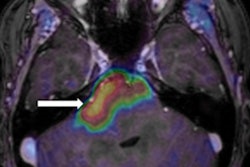A study has confirmed that radiological images have both primary and secondary benefits, which bolster their necessity in the current economic climate, according to a presentation at this week's U.K. Radiological Congress (UKRC 2017) in Manchester.
As part of a doctoral study, William Cox, a senior lecturer in radiography at the University of Portsmouth, and colleagues reviewed the literature to identify the benefits of radiological images. They found there are primary benefits, such as for detection, but also secondary benefits, such as educational ones.
"As developing technology enables access to images for a wider stakeholder group, it is important that there is an awareness of the potential benefits, and risks, that this might bring," they wrote in their e-poster.
The researchers searched five databases, finding 519 papers that fit their study criteria. They classified the papers into two groups: primary benefits (470 papers) and secondary benefits (63 papers). Primary benefits are benefits extracted from the image that align with the rationale for acquisition. They accrue directly to clinical stakeholders and patients by extension. Primary benefits were further subcategorized as aiding in the detection phase (e.g., detection, ruling out, screening), diagnostic phase (e.g., diagnosis, measurement, and staging), and management phase (e.g., pre-, post-, and peri-interventional guidance, as well as follow-up).
Secondary benefits are unrelated to the rationale for acquisition and may accrue to a wider group of stakeholders. They were subcategorized as educational (e.g., teaching anatomy, promoting understanding), relational (e.g., promoting communication, engagement, or satisfaction), and technological (e.g., developing novel techniques and technologies).
"While secondary benefits are less frequently explored in the literature, they may have important implications in key areas, including promoting behavioral change, facilitating communication, and increasing patient engagement," the authors wrote.
Further work is necessary to clarify the benefits that stakeholders may accrue through access to images and to develop a strategy for enabling stakeholders to effectively access these benefits, they added.
Cox's research focuses on the identification and extraction of novel forms of value from diagnostic radiological images. To contribute to the research, contact him at [email protected].



















